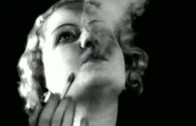The Century of the Self
To many in both business and government, the triumph of the self is the ultimate expression of democracy, where power is truly moved into the hands of the people. Certainly the people may feel they are in charge, but are they really? The Century of the Self tells the untold and controversial story of the growth of the mass-consumer society. How is the all-consuming self created, by whom, and in whose interest?
Series
Part one documents the story of the relationship between Sigmund Freud and his American nephew, Edward Bernays who invented ‘Public Relations’ in the 1920s, being the first person to take Freud’s ideas to manipulate the masses. He showed American corporations how they could make people want things they didn’t need by systematically linking mass-produced goods to their unconscious desires. Bernays was one of the main architects of the modern techniques of mass-consumer manipulation, using every trick in the book, from celebrity endorsement to outrageous PR stunts and to eroticising the motorcar. His most notorious coup was breaking the taboo on women smoking by persuading them that cigarettes were a symbol of independence and freedom. But Bernays was convinced that this was more than just a way of selling consumer goods, it was a new political idea of how to control the masses. By satisfying the inner irrational desires that his uncle had identified, people could be made happy and thus docile.
Part two explores how those in power in post-war America used Freud’s ideas about the unconscious mind to try and control the masses. Politicians and planners came to believe Freud’s underlying premise that deep within all human beings were dangerous and irrational desires. They were convinced that it was the unleashing of these instincts that had led to the barbarism of Nazi Germany, and in response to this, they set out to find ways to control the masses so as to manage the ‘hidden enemy’ within the human mind. Sigmund Freud’s daughter, Anna, and his nephew, Edward Bernays, provided the centrepiece philosophy and the US government, big business, and the CIA used their ideas to develop techniques to manage and control the minds of the masses. However, this was not a ‘cynical exercise in manipulation’ according to those in power, as they really believed that the only way to make democracy work and have a stable society was to repress the ‘dangerous and irrational desires and fears’ of the people.
In the 1960s, a radical group of psychotherapists challenged the influence of Freudian ideas, which lead to the creation of a new political movement that sought to create ‘new people’, free of the psychological conformity that had been implanted in people’s minds by business and politics. This episode shows how this idea rapidly developed in America through “self-help movements”, into the irresistible rise of the expressive self: the Me Generation. Soon, American corporations realised that this new self was not a threat, but their greatest opportunity. It was in their interest to encourage people to feel they were unique individuals and then sell them ways to express that individuality. To do this, they turned to the techniques developed by Freudian psychoanalysts, to manipulate the inner desires of the new self.
This episode explains how politicians turned to the same techniques used by business in order to read and manipulate the inner desires of the masses. Both New Labour with Tony Blair and the Democrats led by Bill Clinton, used the focus group which had been invented by psychoanalysts in order to regain power. Both set out to mould their policies to manipulate people’s innermost desires and feelings, just as capitalism had learnt to do with products. Out of this grew a new culture of public relations and marketing in politics, business and journalism. One of its stars in Britain was Matthew Freud who followed in the footsteps of his relation, Edward Bernays, the inventor of public relations in the 1920s. The politicians believed they were creating a new and better form of democracy, one that truly responded to the inner feelings of individual. But what they perhaps didn’t realise was that the aim of those who had originally created these techniques had not been to liberate people, but to develop a new way of controlling them.




